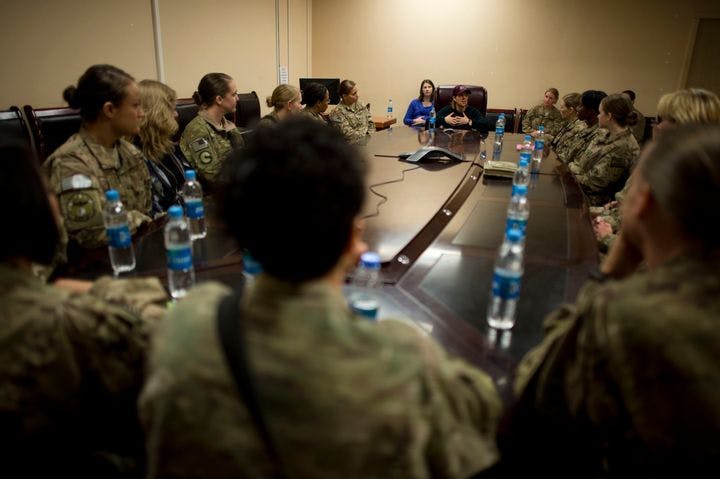Fall 2013
Women won’t just succeed in combat, they’ll excel
– The Wilson Quarterly
Inside the ‘Amazonian edge.’
Sergeant Leigh Ann Hester and nine other soldiers were trailing a military convoy in 2005 when about 50 Iraqi insurgents launched an ambush. Braving machine gun fire and rocket-propelled grenades, Hester, along with her squad leader, successfully flanked and cleared two enemy trenches, killing three of the attackers. For her actions in combat, Hester was awarded the Silver Star — the first female soldier so honored since World War II.
Heroism has not been rare among women serving in Afghanistan and Iraq, where the blurring of battle lines has frequently put them in combat situations. They have won 1,800 combat action badges, and the Pentagon’s decision in January to open combat positions to women will only increase the number of badges. But critics claim that gender integration will impair unit cohesion, damaging the “brotherhood” that bonds frontline troops together.
Nonsense, says Colonel Ellen L. Haring, writing in Parameters, which is published by the U.S. Army War College. “New research suggests women can enhance the combat capabilities of the military from the squad to the joint staff without impairing cohesion.”
There are two types of unit cohesion — “social cohesion,” or getting along, and “task cohesion,” which involves working together — and it’s the latter that’s more crucial to success. The social cohesion that critics fret about is a double-edged sword: too much of it, and a unit can fall into patterns of groupthink. Alternative perspectives and disagreement force everyone to up their game.
Women already serve in combat roles in other nations’ armed forces. Canada, for example, a U.S. partner in Afghanistan, has discovered no “negative effect on operational performance or team cohesion” since it integrated its military in the 1980s. Famously, women make up 34 percent of the Israel Defense Forces, and most combat jobs are open to them. Their commanders say the female soldiers “exhibit superior skills” when it comes to discipline, weapons use, and alertness.
Haring acknowledges the common argument that women lack the physical strength necessary for combat positions but points out that “it is about letting those women serve who can meet the physical standards.” Many women in military police units, such as Hester, regularly perform the same tasks as infantry troops, protecting supply lines and conducting raids. In 2011, more than half of the female cadets at West Point met the same requirements as male cadets on the Army Physical Fitness Test.
Women will not only serve as ably as men — they’ll improve their units’ task cohesion. Recent research suggests that the larger the female component of a crowd, the greater its collective intelligence. “This may be due to a trait [researchers] call ‘social sensitivity,’” Haring says. “The ability to perceive and sense emotional changes leads to more collaborative patterns of group behavior, and women tend to score higher than men in this category.” Women are also less likely than men to dominate conversations — which further boosts a group’s collective intelligence. These results aren’t limited to the laboratory: According to one study, companies boasting at least three female members on their board of directors enjoyed better financial performance than those with none.
In the business world, just over 15 percent of leadership positions are held by women, and in the military it’s even less. Without more women in the platoons and top Pentagon jobs — usually filled by those who have held combat positions — the U.S. military won’t be as smart as it could be, Haring argues. “If the U.S. military wants to optimize its teams’ collective intelligence and make better executive-level decisions, we must tap into the half of the population that is underutilized.”
THE SOURCE: “What Women Bring to the Fight” by Ellen L. Haring. Parameters, Summer 2013.
Photo courtesy of Department of Defense/Erin A. Kirk-Cuomo
